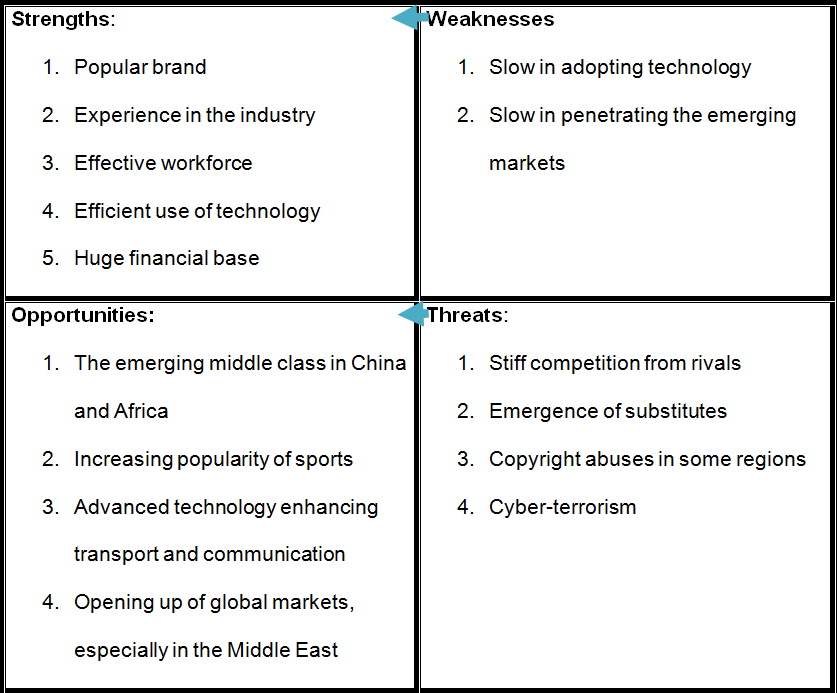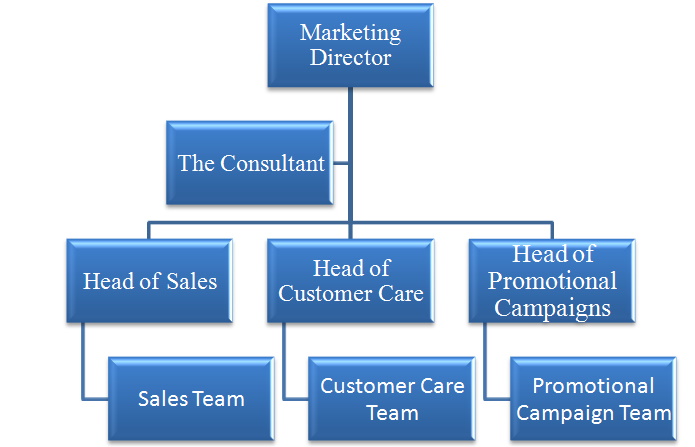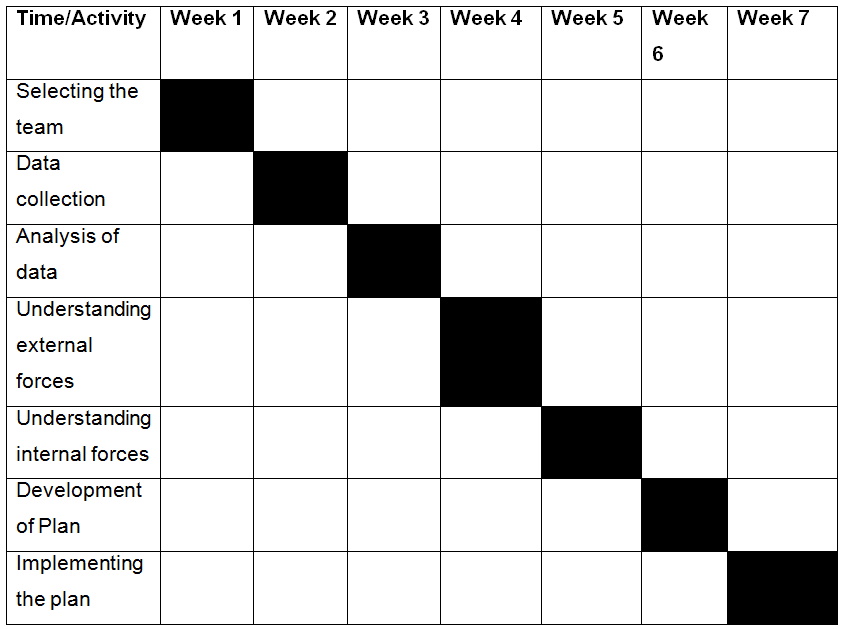Nike Background
Nike is the leading manufacturer and distributor of sportswear in the global market. Headquartered in Beaverton, this giant American corporation has experienced massive growth over the years, and its brand is currently considered the leading brand in sportswear. The sales in the global market have also been positive following the decision of the firm to concentrate on both organisational consumers and the mass market. The active presence of this firm in popular sports such as football has played a major role in promoting its brand. This firm has sponsored some of the leading football clubs in the world, giving it a rare opportunity to advertise itself to the world. Although the firm still has a bright future in the market, there are some forces that may affect its success if not addressed appropriately. For this reason, it is important to develop a marketing planning that will be able to address various challenges that may affect the operations of this firm.
Changing Perspectives in Marketing Planning
There has been a consistent change in the marketing planning perspectives over the years. The following are some of the concepts that have been used over the years in marketing planning.
Nike’s Production Concept
The first concept of marketing was the production concept. During this time, the focus was on developing superior production strategies. The market was readily available, but the few companies that existed during this time had poor production strategies. Competition was very rare during this time. Nike, which was founded in 1964, did not enjoy this period.
Nike’s Product Concept
In the product concept, the focus was to come up with effective standardised products that would offer superior satisfaction (Ranjan 2009, p. 49). The problem of production had been solved, and the companies were now interested in making quality products.
Nike’s Selling Concept
The selling concept came when the firms realised that their production strategies were very effective, and they could produce quality goods in mass. The focus at this stage was to find a way of making the products move faster in the market by making them readily available to the consumers.
Nike’s Marketing Concept
Marketing concept was introduced when managements realised that competition in the market was getting very stiff. They needed strategies that would make their brands be considered popular over other existing brands. It was important to convince the consumers that a particular brand is the best over other brands.
Nike’s Social Marketing Concept
The social marketing concept is a recent strategy where companies strive to take an outward-in approach when dealing with their customers. This is the current strategy that firms such as Nike are using to popularise their products in the market. In this strategy, firms allow customers to decide on the type of the products they want in the market. Instead of a firm presenting a product that it has the best capacity to product, it allows the consumers to inform them of what they desire (Aanderud & Hall 2012, p. 42). With such knowledge, a firm would strive to develop a product that can meet or exceed the expectations of the customers.
Nike’s External Factors
Nike PESTEL Analysis
According to Fisher and Vallaster (2008, p. 92), planning can only achieve success if it is done with a clear knowledge of the environmental factors that may affect the operations of the firm in one way or the other. In order to develop an understanding of the external environment within which Nike operates, it is important to conduct a PESTEL analysis. When analysing the external environment of this firm, it is important to appreciate the fact that Nike operates in the global market. This means that the nature of the environmental forces in one market may not be similar to that of another market.
The political environment in the North American markets, especially in the United States and Canada has been very stable, the fact that has boosted the sales of the firm. However, the ongoing conflicts in the Middle East, Eastern Europe and parts of Africa are affecting the sales of the firm in these regions. The global economic environment has been improving consistently since the end of the recession. It means that the purchasing power is also improving. The social environment, especially in Islamic countries that had shunned American products is also changing positively. Technology has changed drastically over the recent past, and this change has forced Nike to adopt the emerging technologies in the production and marketing of its products in the market. The ecological issues, especially the need to reduce the level of pollution has made Nike to engage actively in the environmental conservation in its corporate social responsibilities. Finally, the legal environment has posed a number of challenges, especially in the markets such as China where the law on trademark is not very effective. This has seen some of its copyrights infringed without any serious action being taken against the offenders.
Nike Porter’s Five Forces Analysis
Porter’s five forces is another tool for analysing the external environment that can be used to determine the competitive position of Nike in the market. The bargaining power of suppliers in the industry within which this firm operates is relatively low. This means that Nike can easily control its supplies. The bargaining power of buyers in the market has been consistently rising following the introduction of other firms offering the same products. It means that Nike needs better marketing strategies to convince the consumers that its products are the best. The rivalry amongst the existing competitors is also on the rise, especially from Adidas and Puma. Competition from substitutes is also rising consistently as new firms are coming with alternative products that can be used instead of what Nike offers. The threat of new entrants has reduced significantly in the global market, the fact that has led to a stiff competition in the market.
Nile’s Marketing Planning Lifecycle
In order to maintain its competitive advantage, Nike must have a clear plan on how to introduce new products into the market on a regular basis. This can take several steps. The first step is the process of developing the product. Once the product has been developed; it will be introduced into the market using various marketing strategies (Kotler & Keller 2012, p. 96). The next phase will be growth where the firm is expected to achieve popularity over a given time. In the maturity phase, the product shall have achieved maximum growth in the market, and will be considered a cash cow to the firm. The last stage will be the decline where sales drop. At this stage, the firm will need to replace the product or redesign it to meet the changing needs.
Nike Internal Analysis Using SWOT Analysis
The internal environmental factors can be analysed using the SWOT Analysis in order to determine the specific factors within the firm that can affect its operations. The table below summarises the internal environmental factors at this firm.

As shown in the diagram above, the management should make an effort of transforming the threats into opportunities, and weaknesses into strengths in order to remain competitive in the market.
Nike’s Capacity for Planning Future Marketing Activities
The capacity of Nike to plan for its future marketing activities depends on various factors. Operationally, the management must determine if it has minimised costs, and maximised on profits. The brand of the firm must remain attractive to the global market if it is to remain the leading manufacturer and distributor of sportswear in the global market. The financial planning must take into consideration the changing environmental patterns. More funds should be allocated to research. The level of competition in the market plays an important role in the planning process. When planning for its future activities, the management of Nike must ensure that the firm remains ahead of the competitors. In order to achieve this success, the management strategies must be effective and flexible to the changing environmental forces. The human resource should also be in a capacity to change whenever this is necessary. Finally the entire team of the employees, including the management, must maintain a positive attitude while at work.
Importance of Marketing Planning in Strategic Planning
In strategic planning process, market planning plays a very important role because it offers the planners the information about the firm, and environmental forces. It offers information about Nike’s current market position, and how this may change with time based on the changing environmental forces. It also offers information about the current products, and how they should be readjusted from time to time to ensure that they remain competitive.
Nike’s Marketing Plan for a New Product
Nike Executive Summary
Nike is one of the leading manufacturer and distributor of sportswear in the global market. The apparel industry has become very competitive in the recent times following the entry of numerous new firms in different markets. Although Nike is still the leading sportswear, the firm needs to readjust its current strategies in order to reflect the changing external environmental factors. Marketing planning is the best way of remaining competitive in the market. In order to conduct an effective marketing planning, the management must have clear information about the internal environmental factors and the external factors that may have a direct or indirect impact on the operations of the firm in the market. For this reason, it is important to understand these factors before coming up with a plan. The management will also need to plan for its finances to ensure that there is enough allocation of resources for research and development.
Nike Current Market Situation
It is clear from the analysis that the external environmental factors of Nike has been rapidly changing over the years, making it necessary for the management to readjust its strategies. The emerging technologies have played a major role in affecting other forces in the external environment. As Keller (2003, p. 46) says, it is now possible for a firm to have its headquarters in New York, the main production plant in Indian, and cover a global market because of the advancement in their field of technology. The internal analysis reveals that Nike has the financial and human resource potential to manage market competition. The strength of its brand offers it a unique ability to explore new markets and to expand its market share in the emerging markets in Asia and Africa.
Nike Objectives
The marketing planning seeks to ensure that Nike remains competitive in the market despite the changing environmental forces. Currently, this firm is considered the leading manufacturer and distributor of sportswear. This plan will help the management to identify some of the strengths and weaknesses of the firm that may affect its operations. This way, it will be possible to use the strengths to address the weaknesses. The threats available in the market should also be turned into opportunities that will make this firm more successful. For instance, the threat of substitute can be addressed by developing products similar to the substitute. This means that the firm will have an opportunity to operate in a sector that is new.
Nike Marketing Strategy
The management of Nike should understand the marketing strategies that will offer it a competitive edge over its market rivals. The following are some of the specific areas that the marketing management unit will need to give enough attention.
Nike Product Development
The product development strategy should be based on an outward in concept where the firm conducts research to determine what the market desires, and then produces goods that will best meet those desires. When developing new products, it is important to ensure that emphasis is given not only to the functionality, but also the design. Some consumers base their buying decisions on the design of the product.
Nike Pricing Strategy
The pricing strategy is one of the most important aspects of planning that should be done with a lot of precision. To achieve success in the market, the marketing unit of Nike should segment the market, and each segment should be targeted with specific products at given prices that would meet their needs and financial capacities. Any price wars with competitors should be avoided.
Nike Distribution Strategy
The distribution strategy should be effective enough to ensure that the products are always available whenever a customer needs them in the market. The firm should consider selling its products through subsidiaries or leading supermarkets in various countries.
Nike Marketing Communications Strategy
The promotional strategies used in the market should be designed as per the target market. For this reason, the marketing unit should understand each of the segments targeted by the products of this firm in terms of their demographical factors. Each of the segments should have a unique message that would be sent to them based on the products that has been designed for the segments. In its communication strategies, the firm should consider using both the mass and social media marketing. The social media will be important in reaching out to the youths.
Nike Marketing Organization
The marketing organisation involves a series of activities by the marketing unit that is meant to ensure that consumers in different market segments receive the right information about specific products that is targeted to them. The team should entail technocrats with knowledge on the social media marketing, and the changing patterns in the market (Kotler & Keller 2012, p. 78). Selected team should be able to understand the target markets of Nike in different regions across the world, and how the firm can design products that meet the expectations of every market segment. The diagram below shows the recommended organisational structure.

Nike Action Plan
The action plan for this firm will include specific activities that will be addressed at different stages, and the time needed at each stage. The process is expected to take seven weeks as shown in the Gantt chart below.

Each of the activities has been allocated one week. However, some of them may be completed within shorter durations, and this will allow the management to conduct a review in order to understand the success achieved within a given period.
Nike Budget
Marketing planning can be a very costly process, especially when it involves a new country or a new issue that the firm has not been dealing with in the past. In this budget, it is estimated that $ 2 million will be needed for effective research and planning that covers most of the sensitive regions in the global market served by this firm. The budget is specifically meant to cover the cost of collecting data from the field in all the selected markets, and the analysis of that data by the selected team of experts.
Nike Controls
The outcome of the plan will be monitored and evaluated by a team of experts who have been responsible for the top marketing operations at Nike. Monitoring and evaluation will be done at the regional level instead of a centralised approach. This means that each of the regional heads will be responsible for the process of monitoring data collection process, analysis, and plan development in their regions in order to be able to offer professional interventions. Given the uniqueness of different regional markets, it is important to allow the regional heads to exercise some form of autonomy in order to come up with plans that will address the local problems.
Conclusion
Nike is one of the leading manufacturer and distributor of sportswear in the global market. Its brand is considered the most valuable brand in the apparel industry. The firm has been experiencing positive growth over the years. However, the growing competition in this industry is posing serious challenges that may affect its operations in the market. The best way of managing the threats posed by the external environmental factors is by developing an effective marketing plan that is sensitive of the dynamic environmental forces. Marketing planning is a complex process that needs a clearly defined approach in order to achieve the desired success. In order to develop an effective plan, it is important to collect the relevant information about the internal and external environmental issues. This will help in making an informed decision during the planning process.
References
Aanderud, T & Hall, A 2012, Building business intelligence using SAS: Content development examples, SAS Institute, New York.
Fisher, C & Vallaster, C 2008, Connective branding: Building brand equity in a demanding world, Wiley, Chichester.
Keller, K 2003, Strategic brand management: Building, measuring, and managing brand equity, Prentice Hall, Upper Saddle River.
Kotler, P & Keller, K 2012, Marketing management, Pearson Education, Harlow.
Ranjan, J 2009, Business Intelligence: Concepts, Components, Techniques and Benefits, Journal of Theoretical and Applied Information Technology, vol. 9. no. 1, pp. 60-70.
